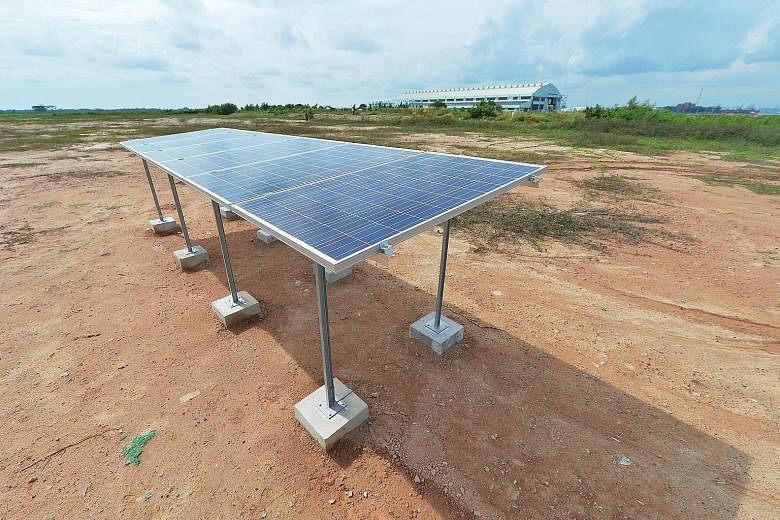It is already possible to harness energy from the sun, wind or tides for electricity. But making them work together in an integrated system used to be just a theory - until now.
Scientists from Nanyang Technological University (NTU) are building the region's first large-scale, offshore power grid system on 64,000 sq m of land, roughly the size of eight football fields.
The system on Semakau Landfill, south of Singapore, will have four separate microgrids, each with its own composition of energy sources.
Called the Renewable Energy Integration Demonstrator-Singapore (Reids), the project will look at combining renewable power from the sun, wind and sea, as well as from diesel, storage and power-to-gas technologies, to ensure all these energy sources operate well together.
The deployment of Reids on Semakau was announced yesterday by Environment and Water Resources Minister Masagos Zulkifli during the Asia Clean Energy Summit at the Sands Expo and Convention Centre.
Having multiple energy sources within each grid will help overcome the challenges of using renewable energy, such as the intermittency of solar energy on cloudy days, or the lack of wind on a still day. This is because electricity can still come from other energy sources, or from the storage devices, when the supply of one is short.
Led by the Energy Research Institute @ NTU and supported by the Economic Development Board (EDB) and National Environment Agency (NEA), the grid costs an initial $10 million and is expected to draw $20 million in project investments over the next five years.
"(Reids) will enable NEA to power its infrastructure on Semakau Landfill using electricity generated through zero-carbon means," said Mr Masagos. "The use of energy storage and microgrid control technologies will allow the landfill to reduce its reliance on diesel-based power and transition towards renewable energy."
The announcement marks the launch of the second phase of the Reids project, which was first announced by Minister for Trade and Industry (Industry) S. Iswaran in 2014. The first phase of the project - the installation of 3,000 sq m of solar panels, or the first microgrid - has already been completed.
The next step is to build three more microgrids. Once all four are ready by the third quarter of next year, they are expected to produce stable and consistent power - enough for about 250 four-room Housing Board flats.
Fish hatcheries on Semakau, as well as a desalination plant that scientists hope to build there, will be among the first to be powered.
Professor Hans Bjorn Puttgen of NTU, who is principal investigator and Reids director, said microgrid systems could be used to provide electricity on islands, in remote villages, or during emergency situations such as after a natural disaster.
EDB executive director of cleantech Goh Chee Kiong said Singapore has identified microgrids as a key area for the clean energy industry.
There is already regional interest in Reids. Two agreements were inked yesterday between Reids developers and industry players.
A hotel on Bawah Island, an Indonesian island in the South China Sea that is run on diesel generators, yesterday signed a pact with NTU to deploy a renewable energy microgrid by next year through the Reids platform.
Meralco, the largest electricity distribution company in the Philippines, will partner Reids to embark on microgrid projects and perform joint research and development.


